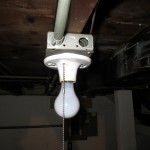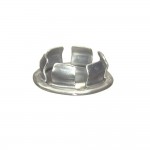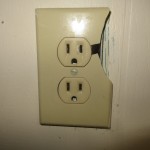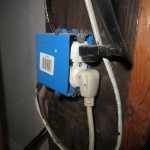If you live in or around the Twin Cities metro and you’re getting your house ready to sell, your city may have a Truth in Housing requirement that needs to be met before you can put your home on the market. One of the major areas evaluated in Truth in Housing inspections, and one where I routinely find deficiencies, is the home’s electrical system. In fact, it’s a rare home where an electrical problem of some sort or another is not uncovered. While some of these issues are quite hazardous and should be corrected only by a licensed electrician, there are a number of common electrical concerns that you can correct yourself. And you do not need to wait for the evaluation to take place. If you’ll address these issues beforehand, you’ll pave the way for a smooth Truth in Housing inspection and at the same time make your home a much safer environment.
Missing Junction Box Covers
While junction boxes have a number of purposes, one of their main functions is to serve as a housing device for wire connections. In fact, unless you live in an older home with knob and tube wiring, every electrical splice is required to be inside a junction box. This is not a matter of aesthetics. These boxes are an integral part of your home’s electrical system and serve to reduce the risks of both fire and shock. Without a cover, the protective properties of a junction box are minimized. If you have uncovered boxes in your home (look specifically in basements, attics, garages, and other unfinished areas), you can quickly and cheaply remedy this problem. You can pick up a cover at any hardware store for less than a buck. In the time it takes to loosen a couple of screws and mount the cover in place, you’ve taken care of one Truth in Housing item and greatly enhanced the safety of your home.
In fact, unless you live in an older home with knob and tube wiring, every electrical splice is required to be inside a junction box. This is not a matter of aesthetics. These boxes are an integral part of your home’s electrical system and serve to reduce the risks of both fire and shock. Without a cover, the protective properties of a junction box are minimized. If you have uncovered boxes in your home (look specifically in basements, attics, garages, and other unfinished areas), you can quickly and cheaply remedy this problem. You can pick up a cover at any hardware store for less than a buck. In the time it takes to loosen a couple of screws and mount the cover in place, you’ve taken care of one Truth in Housing item and greatly enhanced the safety of your home.
Missing Knockout Seals
A knockout is a hole in a junction box that functions as the entry/exit point for wire and conduit. For any number of reasons, your home may have knockouts that are no longer in use. Have a look around your home’s unfinished areas. This is where junction boxes and missing knockouts are most readily seen.
Inside sink base cabinets is another area to check. Any unused knockouts you find should be sealed for the same reasons that a junction box requires a cover. Again, think fire and shock protection. Knockout seals can be purchased individually or in multi-packs. Either way, the cost is less than $.50 per seal. When installing, set the knockout seal in place and give it a tap with a hammer. Now you’ve taken care of a second Truth in Housing item and instantly improved the safety of your home.
Damaged or Missing Switch and Outlet Cover Plates
Outlet and switch cover plates can function for years, but when they become broken or damaged they should be replaced. While these plates do have an aesthetic property to them, it should be remembered that, functionally, they serve the same purpose as the junction box cover plates discussed above. Their job is to protect against fire and shock, only with a little more style.
Older plates were stiff and not very flexible. When tightening the screw to secure them, they were easily cracked. Some of the newer plates are made with a more pliable plastic that can be tightened down with no fear of breaking. This is a really nice feature. If any of your home’s switches or outlets have cover plates that are cracked, broken, or damaged, replace them. Likewise, if the cover plate is missing entirely, get it covered up. Cost of replacement depends on size, but should run under a dollar. That’s a third Truth in Housing item corrected and a third safety improvement to your home.
Before you embark on any of these fixes, be sure to turn off the power at the service panel for any of the circuits you are working on. A Non-Contact Voltage Tester can be a useful tool at this point. It will detect current in the wires if you are not sure.
Now, if you’ll invest just a few dollars and a little bit of time, you can prepare your home for a Truth in Housing inspection. By doing this, you’ll avoid some of the more common Repair/Replace and Hazardous items that require a re-inspection. You’ve also made your home a better place to live, both for yourself and the next owner.
Check back soon for Part 2 of this series where I will address Truth in Housing electrical issues that only a licensed electrician should correct.



